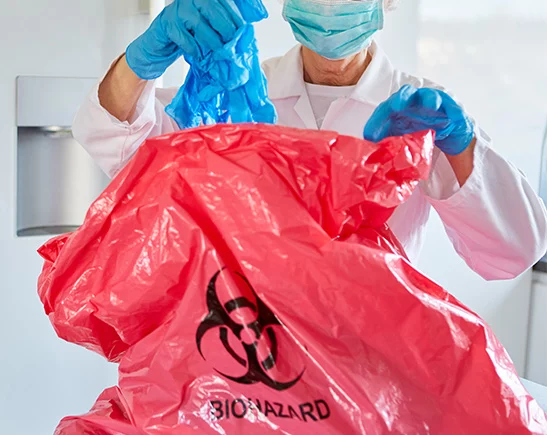Discovering Different Garbage Disposal Options for a Cleanser Atmosphere
In the pursuit of a cleaner setting, the administration of waste disposal has actually emerged as an important focal factor for lasting advancement. With a multitude of waste disposal choices available, varying from traditional land fill approaches to ingenious waste-to-energy modern technologies, the choice of exactly how we manage our waste has significant effects for our world's wellness.
Recycling Methods
Applying efficient reusing methods is critical in minimizing waste and advertising sustainability in our atmosphere. Reusing entails the procedure of transforming waste products into multiple-use things to stop unneeded disposal.
An additional important recycling method is composting, which entails decomposing natural waste like food scraps and backyard trimmings right into nutrient-rich soil. By integrating these numerous reusing techniques right into our waste management methods, we can dramatically lower our environmental impact and relocate towards a much more sustainable future.

Composting Methods
Effective waste administration methods, such as reusing techniques, lead the means for a cleaner environment, and now, moving the focus to 'Composting Techniques', we explore sustainable methods to decay organic waste for environmental benefit. medical waste removal service.
Composting is a natural procedure that transforms organic waste, like food scraps and backyard trimmings, into a nutrient-rich dirt change. The secret to successful composting hinges on developing the best equilibrium of green materials, such as fruit and vegetable scraps, and brownish materials, like dried leaves and branches. These materials decompose with the aid of bacteria, breaking down the waste into beneficial garden compost.
Typical backyard composting includes layering natural materials in a bin or pile and consistently transforming the combination to aerate it. By using composting strategies, we can reduce the amount of waste sent to land fills while developing a helpful item for improving soil and supporting plant development.
Incineration Pros and Cons
Incineration, as a garbage disposal approach, offers both benefits and disadvantages that merit careful consideration in the realm of sustainable waste administration methods. On the silver lining, incineration can dramatically lower the volume of waste, minimizing the need for land fill room and possibly decreasing greenhouse gas discharges. Incineration likewise permits the recovery of energy through the generation of power or heat, contributing to source recovery. In addition, the procedure can be utilized to ruin harmful materials, supplying a secure technique for taking care of specific kinds of waste that may position risks to public wellness and the atmosphere if left untreated.
Nevertheless, there are significant drawbacks to incineration. One major problem is the potential launch of hazardous contaminants right into the air, such as dioxins, hefty metals, and particulate matter, which can have damaging effects on human health and the atmosphere. In addition, the high first investment and operational expenses of incineration centers pose financial challenges, making it a less cost-efficient option compared to various other waste management techniques. Cautious tracking and regulation are vital to reduce these unfavorable effects and take full advantage of the advantages of incineration as part of a detailed waste monitoring strategy.
Garbage Dump Monitoring Approaches
Land fills play a critical duty in waste administration and environmental conservation by providing a containment system for the disposal of solid waste materials. Efficient garbage dump management strategies are important to reduce environmental influences and make certain the long-lasting sustainability of these waste disposal sites. One crucial technique appertains waste compaction to take full advantage of the use of offered area within the landfill (click here). By condensing the waste, the volume is lowered, enabling more waste to be suited gradually.
In addition, the application of everyday cover techniques is important in minimizing odors, preventing litter, and reducing the attraction of bugs. Treatment the disposed waste at the end of every day helps to consist of smells and prevent possible environmental contamination. Furthermore, the surveillance of landfill gas exhausts and leachate levels is critical in guaranteeing that ecological requirements are fulfilled and that any prospective threats to bordering communities are decreased.

Waste-to-Energy Technologies
Among the cutting-edge techniques to waste administration entails taking advantage of Waste-to-Energy technologies to convert strong waste into functional power resources. Waste-to-Energy (WtE) innovations incorporate a range of procedures that intend to extract power from waste products through thermal, chemical, or organic ways. This conversion procedure not just reduces the volume of waste that finishes up in land fills but likewise generates valuable energy resources such as electricity, heat, or biofuels.
There are a number of approaches of Waste-to-Energy conversion, including gasification, pyrolysis, and incineration. Incineration involves shedding waste at high temperature levels to generate warm and electricity. Gasification converts waste right into a syngas, which can be used for power generation or chemical production. Pyrolysis breaks down organic materials using high temperature levels in the absence of oxygen, generating char, gas, and bio-oil.
Executing Waste-to-Energy innovations can help reduce environmental issues associated with typical waste disposal approaches while simultaneously giving a renewable energy source. Careful factor to consider should be given to exhausts control and making sure the sustainability more information of feedstock materials for these technologies to be truly beneficial for a cleaner setting.

Verdict
To conclude, checking out various waste disposal options such as recycling, composting, incineration, land fill monitoring, and waste-to-energy modern technologies is essential for promoting a cleaner atmosphere - click here. Each approach has its own advantages and difficulties, yet by utilizing a combination of these strategies, we can function towards decreasing the quantity of waste that winds up in landfills and ultimately contribute to a much more lasting future for generations to come
With a wide range of waste disposal alternatives available, ranging from standard land fill approaches to innovative waste-to-energy technologies, the option of exactly how we handle our waste has significant effects for our earth's health. medical waste removal near me.Incineration, as a waste disposal approach, offers both advantages and drawbacks that warrant mindful consideration in the world of sustainable waste management techniques.Land fills play an essential role in waste monitoring and environmental conservation by providing a containment system for the disposal of strong waste products. By condensing the waste, the quantity is minimized, allowing for more waste to be suited over time
One of the innovative approaches to waste monitoring entails using Waste-to-Energy modern technologies to transform solid waste into usable power sources.